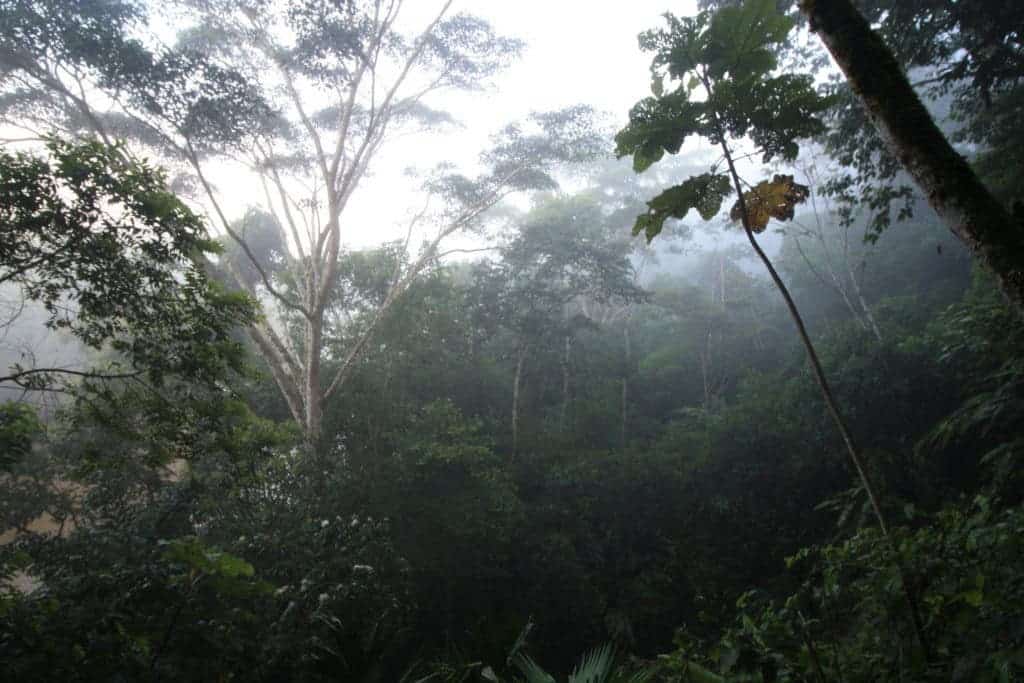The Amazon rainforest ecosystem could collapse in as little as 49 years and the Caribbean coral reefs in only 15 years, a new study warns which found large ecosystems are more vulnerable than previously thought.

By now, it should come as no surprise that human activity is applying intense pressure on the planet’s natural systems, threatening thousands of species with extinction.
At sea, a third of marine mammals, reef-forming corals, sharks, and shark relatives are on the brink of extinction. Life on land isn’t faring any better. Humans have significantly altered three-quarters of the earth’s land surface area, leaving more than half a million species without enough habitat to survive.
This is dangerous since some ecosystems can simply collapse once it has lost its defining environmental or natural features or if they are replaced by a different type of ecosystem. Clear lakes can turn green, coral reefs can get bleached, and forests can turn into savanna grasslands following massive deforestation.
Researchers at the University of Southampton, England, and the University of Bangor, Wales, analyzed the transformations incurred by 40 natural environments on land and in waters. Their size varied from small ponds to marine ecosystems.
The findings suggest that large ecosystems take longer to collapse than smaller ones, owing to their sheer size. However, the rate at which large ecosystems become vulnerable to collapse is significantly faster than the rate of change of smaller systems.
Writing in the journal Nature Communications, the authors claim that these findings can be explained by the fact that larger natural systems are made up of multiple sub-systems of species and habitats.
These ecological compartments provide resilience against stress in the initial phase of the transformation. However, once a certain threshold is crossed, the same modularity contributes to an acceleration of the system’s collapse.
“The challenging part was to manipulate a series of models to see if they showed the same relationships. It required many months of simulations often using a super-computer but overall the model simulations support the observed findings. The ‘Aha’ moment was when we realised the relationship was sub-linear meaning the speed of collapse per unit area increases as the total area increases,” John Dearing, Professor in Physical Geography at the University of Southampton, told ZME Science.
“Large systems will take longer to tip from one state to another – because the stresses take longer to spread across larger distances. But the rate of tipping is relatively more quickly in large systems so a forest that’s a hundred times bigger than another forest will take much less than a hundred times the time to collapse,” he added.
In fact, the researchers found that huge ecosystems that have existed for thousands of years could collapse in as little as 50 years.
“We worked in China trying to understand why lakes had quickly shifted from clear water to ‘green’ water with algal blooms. We simply asked the question about how the size of a lake would affect how quickly it shifted into the ‘green’ state – and started to collect published data where this had already been observed,” Dearing said.
According to the researchers, the main threats for forest ecosystems are deforestation and disease; nutrients from the catchment and poor fish management for lakes; silt and over-fishing for coral reefs — ” and all of these interact with global warming to make ecosystems less resilient and therefore more vulnerable,” Dearing added.
A prime example of the unraveling effects presented in the new study is represented by the recent bushfires in Australia — the worst in recorded history.
In the future, Dearing and colleagues plan on conducting more modeling to gain even more insight into how ecosystem collapse unfolds.
“The public should be worried. It means that large, iconic ecosystems like the Amazon forest could collapse much more quickly than we might intuitively expect. Once deforestation and global warming stress the forest to the point that it reaches a tipping point, it could be a matter of a few decades before the whole forest shifts into a grassland,” Dearing concluded.
“It’s yet another warning about the potentially irreversible damage that’s being done to global ecosystems – damage that threatens biodiversity, the food and other ecosystem services that we depend upon, the wellbeing of local communities, and the stability of other interdependent systems, like regional climate – and all happening much more quickly than we might think.”


